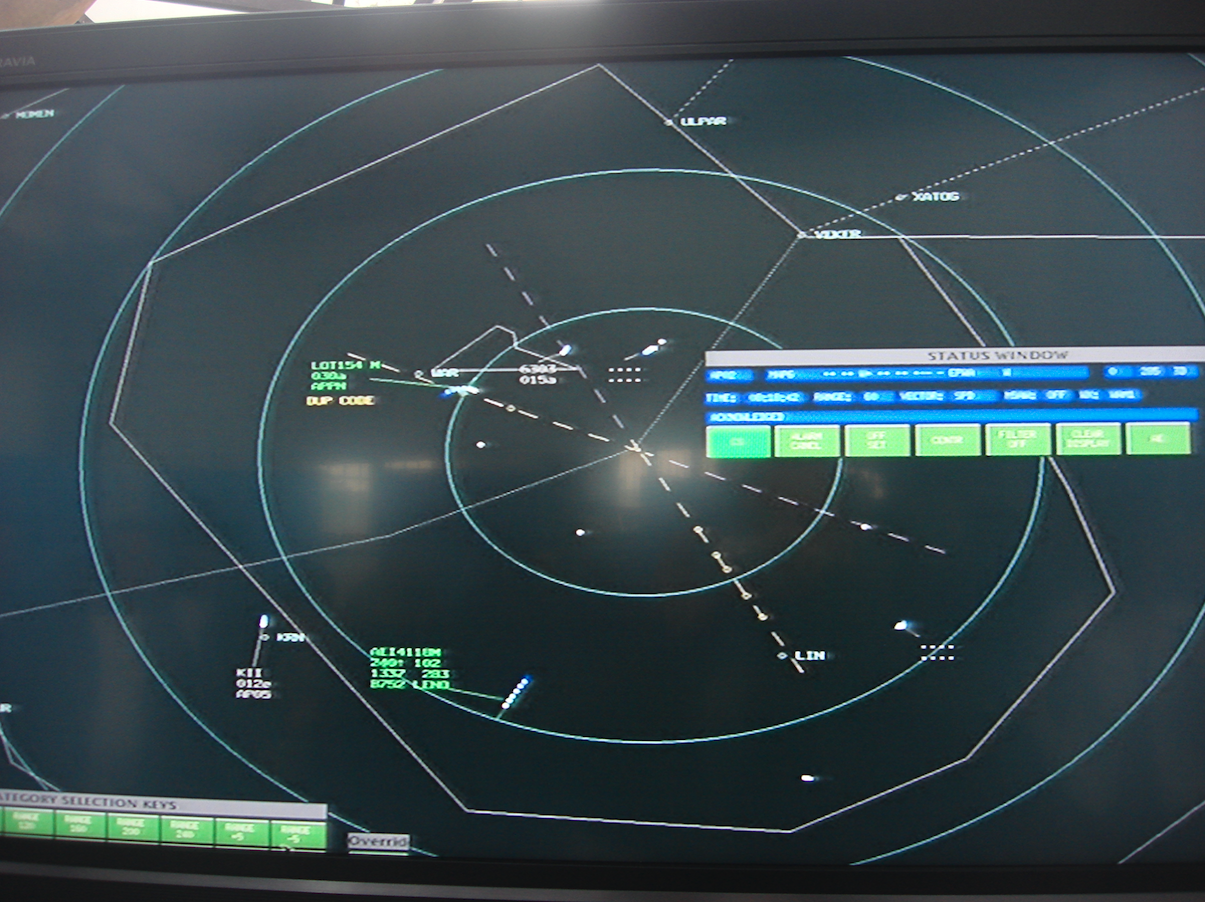Kraków 2015-11-13
Radar air traffic control system.
Area Control Center (ACC).
Area Control is the authority that deals with all civil aircraft in the space of the Flight Information Region (FIR).
Initially, Poland had one FIR area, Warszawa EPWW. But it has had five FIR areas for several years; Gdańsk, Olsztyn, Poznań, Warsaw and Kraków. Nay. Part of the area of Western Pomerania and a fragment of the Baltic Sea we got rid of in favor of the Germans (FIR Heringosdorf), and there were even attempts to give control over the narrow passage to Lithuania.
Over 90% of planes flying over Poland do not land in Poland. Among them are planes that, for example, fly from Eastern Asia to Western Europe. For various reasons, their arrival time in our control zone may differ significantly from the declared one, because these planes have already had a few or several hours of flight behind them. Also, the place of entry to the area may differ by several dozen or even several hundred kilometers. The aircraft should be properly identified and facilitated for the crew to fly through our area on such a course that they can approach their optimal route.
At the Area Control stand, we distinguish the following positions; 1 ACC radar controller; in its sector, it ensures maintaining separation between aircraft, and at the same time should help crews maintain optimal flight routes. 2 planning controller; supports the work of the radar controller by duplicating the image of the situation in the air in the procedural system by means of flight progress bars. In addition, it agrees with the area control authorities on the entry and exit of aircraft from its airspace. 3 flight data operator - supports the FSW (Flight strip workstation) terminal, supports the work of ACC controllers, prepares flight progress strips, etc.
Back in the 40s, before there were radars, Area Control relied mostly on progress bars. The progress bars were placed on the holder bay. All information was obtained by radio and telephone and entered manually on strips. Colors have already been used for the stripes.
Using radars, the work of controllers is supported by a computer air traffic control system. The interface is an LCD screen (indicator) on which each airborne object has an appropriate marker indicating its current position. The appropriate flight code (flight number), occupied ceiling, type and registration of the aircraft, speed calculated by the computer, deviation from the prescribed parameters are next to the marker. In addition, the screen shows the borders of countries and control zones, atmospheric phenomena, areas excluded from commercial traffic and others. All data is taken from; radar network, computer library, meteorological information and others. An important function of the system is the automatic transfer of the aircraft to the next Area Control zone. It is not possible to refuse to take control of a legally moving aircraft. The new area gives the crew new radio frequencies for radio correspondence. On the indicator, the aircraft marker receives a new letter/number. For security, the screen image and radio correspondence is recorded and has additional information, for example the data of the persons conducting the service. This is how a terrestrial black box is created.


As you can easily see, Area Control is not for its own sake. Together with the other Area Controls, it constitutes the entire network. And in the case of Europe, they are supervised by the Air Traffic Flow Management Center (CFMU) in Haren near Brussels. Without going into details; This is where every commercial flight plan must come in and where routes are prepared to fit as many aircraft as possible into the air.
If an unreported flight is detected, the controller notifies the Polish Air Force Command. As a consequence, a pair of combat aircraft on duty would take off to force the intruder to land at the nearest airport. In fact, the Polish Air Force Command already has information about an unidentified object trying to enter Polish space from the east, thanks to the BACKBONE system.
Data from the measurements are transferred via telecommunication links (in 1997, these were lines belonging to Telekomunikacja Polska S.A. with a speed of 9,600 kb/s) to Warsaw. Here they are processed in a radar data processing system. The system is able to process data from 16 radar stations. The position, direction and speed of the aircraft are determined. Much of the data is obtained from secondary radars. Since 1998, planes have been accepted and handed over automatically from the Polish FIS.
Written by Karol Placha Hetman
